The opening salvo
I did study the techniques of dyeing and printing during my degree course, but that was industrial printing and dyeing, on a vast scale and using chemical dyes. Using natural dyes and working on a smaller scale will be a whole new adventure. It isn’t as consistent, but then that is the charm of it.
So off I went, rummaging through the interwebs for an introduction to natural dyeing and finally found it via Twitter, in a workshop entitled “Twenty Five Shades Of Madder” in the Glasgow Botanic Gardens given by Julia Billings of Woollenflower. It was fascinating, and gave me much to think about.
Mind you, I might have given Julia and all the other lovely ladies on the course something to think about as well, because I had my quotation from Pliny in my notebook to explain what an embroiderer was doing at a workshop, run by a knitter and attended largely by knitters.
It did more than explain – everyone’s imagination went into overdrive! The idea of multicoloured fabric coming out of a single dyebath clearly enchants everyone, not just me!
We even had a walk through the Gardens looking for plants that yield dyes. There are a lot of them – more than you might think!, and mordants (pre-dyebath treatments) and modifiers (post-dyebath treatments) make a lot of difference as well.
So now, I have a list of books and DVDs to look at, and suggestions of other people to get in contact with or research – and someone to ask for help if it all gets too much (thanks, Jules!)

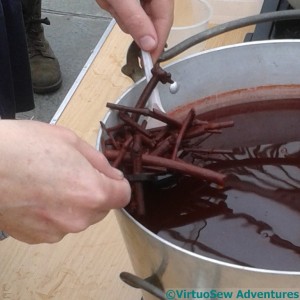
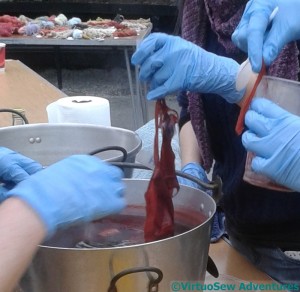
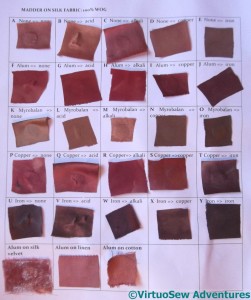
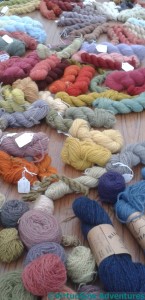
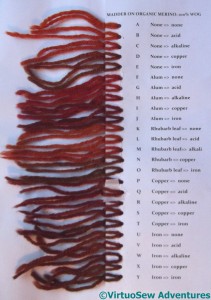
Nice colours. And using natural dyes is much better for the environment!
Oh my goodness, this looks amazing. I may be a teeny bit jealous Rachel!
Ahhh I new adventure!! It will be fun to see what results you get and read about all the fun you’re having.
Looks like you’re up and running on this project now, Rachel. I’m looking forward to seeing your own experiments in due course.
I love that picture of all the wool colours. When I see something like that, I so wish I could work with wool.
I would love to have a go at dyeing, but due to our little private sewage system, I wouldn’t be able to wash any dye into our drains, as it could possibly endanger our permission to discharge into the waterway (even with natural dye).
I hope you have lots of fun creating your own colours!!
This looks like it is going to be fun. How knows where it will lead?
Interesting…natural dyeing process is exciting . I’m looking forward to read about your experiments. Have fun with colours.
Sounds like its really whetted your appetite for something new and exciting!
This project is going to be interesting to watch! I did a little (very little) work with natural dyeing several years ago. Reading books and articles about it always fascinates me and the experimenting with color on silk and wool is a great example of what intrigues me.
Natural dyeing is fun. Dye your own threads to stitch is so beautiful !
I don’t know what it is about fabric swatches but they are so very endearing. You have some great colours here Rachel.
Did you learn about natural mordants and modifiers Rachel? I’d like to develop a list of them so that the whole thing can be done in the kitchen safely. I know Jules would also like this. Perhaps the three of us can gradually develop a list.
PS. I frequently feel like I’m going 25 shades of madder! 🙂